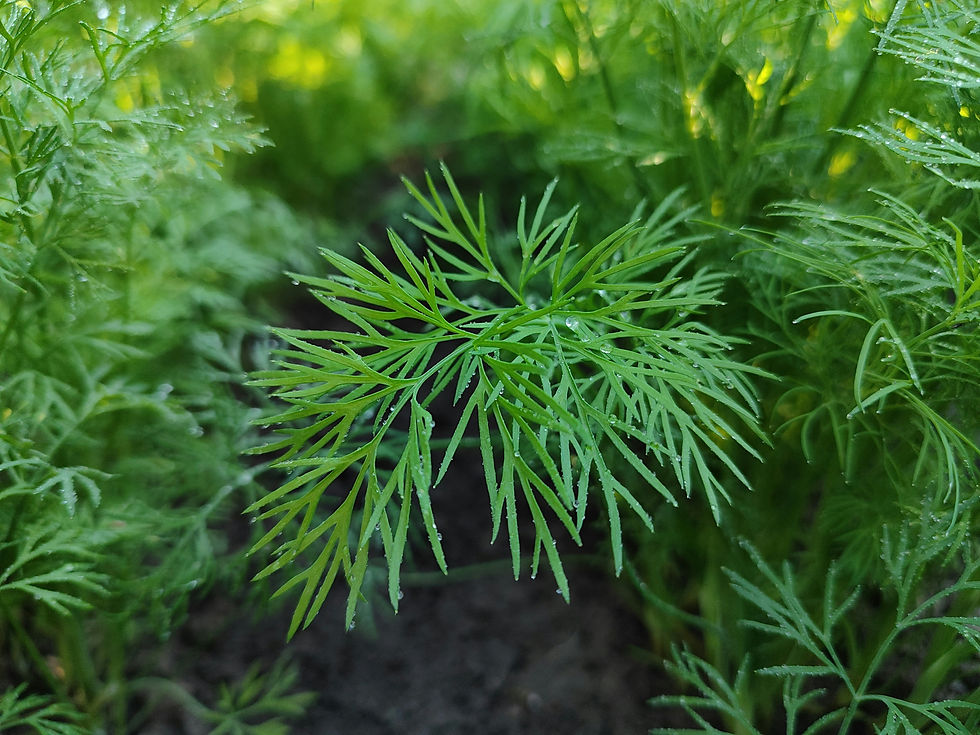Whiteflies: How to Defeat These Tiny Troublemakers with Organic Pest Control
- Jonathan Valencia

- Mar 1, 2024
- 7 min read
Updated: Mar 2, 2024
Discovering tiny white bugs on your beloved plants can be alarming. These pests, known as whiteflies, are notorious for wreaking havoc on both outdoor and indoor plants, as well as those in greenhouses.
In this comprehensive guide, we'll delve into the world of whiteflies, exploring their habits, life cycle, and most importantly, how to banish them from your plants using organic pest control methods.
What Are Whiteflies?
Whiteflies, though small in size, pose a significant threat to plants. With their yellow-to-white triangular bodies, measuring a mere 1/12-inch long, they resemble tiny flying specters haunting your garden.
Despite their misleading name, whiteflies are not flies but are closely related to mealybugs and aphids. Feeding on plant sap during daylight hours, these pests can quickly multiply and infest your greenery.
Understanding Whitefly Behavior:
To effectively combat whiteflies, it's crucial to understand their behavior patterns. These pests are drawn to certain plants, particularly those with smooth, soft leaves. Houseplants and vegetables such as brassicas, sweet potatoes, and nightshade varieties are common targets.
Whiteflies congregate on fresh growth and the undersides of leaves, where they feast on plant sap. When disturbed, they scatter in swarms, making detection challenging. By familiarizing yourself with their habits and preferred habitats, you can implement targeted control measures and minimize their impact on your plants.
Environmental Factors Influencing Whitefly Infestations:
Understanding the environmental factors that contribute to whitefly infestations is essential for effective management. Warm, humid conditions are conducive to whitefly reproduction, accelerating their life cycle and population growth.
In regions with mild winters, whiteflies may persist year-round, posing a continuous threat to plants. Greenhouses provide an ideal environment for whiteflies, offering warmth and shelter throughout the year. By controlling environmental conditions, such as humidity levels and temperature fluctuations, you can disrupt whitefly breeding cycles and reduce their impact on your plants.
Additionally, implementing proper ventilation and sanitation practices in greenhouses can help mitigate whitefly infestations, promoting a healthier growing environment for your plants.
Signs of a Whitefly Infestation:
Identifying a whitefly infestation amidst the plethora of plant pests can be challenging. However, yellowing leaves, wilting foliage, and stunted growth are telltale signs.
Additionally, the presence of sticky honeydew residue or sooty mold on leaves indicates a whitefly infestation, distinguishing it from other plant ailments.
The Whitefly Life Cycle:
The rapid reproduction cycle of whiteflies is a key factor in their infestation potential. In warm, humid conditions, these pests can complete their life cycle in a mere 16 days, with each female laying around 400 eggs in her lifetime.
From egg to mature adult, whiteflies wreak havoc at every stage, attaching themselves to the underside of leaves and sapping the plant's vitality.
Preventing Whiteflies:
Prevention is the cornerstone of effective pest management. Maintaining plant health through proper watering, sunlight exposure, and fertilization strengthens plants' resistance to whiteflies.
Experiment with companion planting, utilizing flora like nasturtiums and marigolds to repel pests, while attracting predatory insects and birds. Embrace organic gardening practices to preserve the delicate ecosystem balance, minimizing reliance on synthetic pesticides.
How to Get Rid of Whiteflies Naturally:
Embracing organic remedies is not only effective but also environmentally friendly. Neem oil, derived from the neem tree, serves as a potent deterrent against whiteflies. Its active compounds disrupt the pests' feeding and reproductive cycles, reducing their population over time.
Similarly, insecticidal soaps, made from natural ingredients like Castile soap, suffocate whiteflies upon contact while leaving beneficial insects unharmed. These organic solutions offer a sustainable approach to pest management, ensuring the health and vitality of your plants without compromising the ecosystem.
Make Your Own Insect Spray
You can create an all-purpose insect spray by combining one garlic bulb, one small onion, and one teaspoon of cayenne pepper in a food processor to make a paste. Mix the paste into one quart of water and steep for one hour.
Strain through cheesecloth and add one tablespoon of liquid dish soap. Mix well and use the concoction as a leaf spray. The mixture can be stored for up to one week in the refrigerator.
Frequently Asked Questions:
Learn about natural predators of whiteflies, their origins, and safe pest control methods during flowering periods, ensuring a harmonious coexistence between your plants and beneficial insects.
What will whiteflies do to the plants in my yard?
Whiteflies feed on plants through a needle-like mouthpart. The type and level of damage you might see depends upon the species of whitefly and plant. Typical symptoms can include leaf yellowing, leaf wilting, leaf drop, and overall plant decline. Some whiteflies may also produce a white, waxy substance and a sticky substance that can cover parts of the plant.
Will the whiteflies inject a virus into my plants?
Some whiteflies are known to inject viruses into plants. However, ficus whitefly, Rugose spiraling whitefly and Bondar’s nesting whitefly have not been associated with any known viruses.
Is it just whiteflies that can cause my Ficus benjamina hedge to lose its leaves?
When ficus is exposed to a rapid change in temperature or other environmental conditions, it will often drop its leaves. Ficus tends to lose its leaves when it is under some sort of stress (e.g. drought, freezing temperatures etc.). Ficus whitefly does cause ficus to drop its leaves, however it takes several months of having a whitefly infestation before this happens.
What is the sticky stuff and does it hurt my plants?
Some insects, including whiteflies, will excrete a clear, sticky liquid called “honeydew”. Honeydew does not harm your plants, however, black sooty mold will grow where there is honeydew. Honeydew can be messy and may potentially damage the finish on cars or other painted objects if not washed off.
What is the black stuff and does it hurt my plants?
The black stuff is sooty mold which grows on honeydew produced by some insects. Sooty mold is a fungus but is not a plant disease. However, when your plants are completely covered with sooty mold, it may interfere with photosynthesis which can affect the overall health and growth of a plant. Sooty mold can last a long time but will eventually wear off. Pressure washing is often used to remove sooty mold.
Should I use biological control to manage whiteflies in my yard?
The most important thing you can do is not to harm what already exists in your yard. There are many good insects and diseases in your yard that can attack whiteflies. The types and methods of insecticides you choose to use can help keep the good guys there. At this time, buying and releasing the good insects will probably not have much impact.
Should we buy and release ladybugs?
At this time, the answer is no but this may change for the future as more information is developed. Ladybird beetles (ladybugs) can be excellent predators for many pests. Although many will eat several types of pests, there still needs to be a match between the predator and the pest. The common ladybug that many people purchase from nurseries or through the mail prefer to feed on aphids. It is called the convergent lady beetle (Hippodamia convergens).
What effects do insecticides have on the natural enemies?
Anything you do to control the whiteflies in your yard can have some negative impact on natural enemies. This is particularly true for many of the insecticides. Many of the insecticides will harm the good insects so it is important to follow the label instructions to use these products in the safest manner possible. Typically, insecticides that have direct contact with the natural enemies (e.g. spraying on the leaves) will have the most negative impact.
Is drenching with the Neonicotinoid insecticides harmful to bees?
Typically, spraying most insecticides on leaves can be harmful to natural enemies due to the direct contact. If a product is toxic to bees, then a foliar spray should not be used on plants when bees are actively pollinating those plants.
This includes the neonicotinoids. The neonicotinoids can be applied to the soil or trunk of a tree which reduces direct contact to natural enemies. However, there is potential exposure through pollen to those insects that visit flowers of treated plants.
Bees must visit a flower and feed on pollen or nectar in order to be exposed to soil or trunk applied systemic insecticide. Ficus and many other trees impacted by the problematic whiteflies do not flower, or are not pollinated by bees.
Neonicotinoids or any other insecticides should only be used when necessary to avoid negatively impacting natural enemies including bees. Many of the insecticides applied to the leaves such as the pyrethroids could have a larger impact on the bee populations than soil or trunk treatment with a neonicotinoid.
Cultural Practices to Deter Whiteflies:
Incorporating cultural practices into your gardening routine can fortify your plants against whitefly infestations. Proper plant care, including regular watering and adequate sunlight exposure, strengthens plants' natural defenses. Companion planting strategies, such as interplanting pest-repelling herbs and flowers, create an inhospitable environment for whiteflies.
Additionally, reflective mulches or aluminum foil barriers around plant bases disrupt whiteflies' navigation, deterring their colonization. By integrating these cultural practices into your gardening regimen, you can proactively safeguard your plants against whitefly attacks and promote a thriving garden ecosystem.
Monitoring and Early Detection:
Vigilance is key to preventing whitefly infestations from spiraling out of control. Regular monitoring of your plants allows for early detection of whitefly activity, enabling prompt intervention.
Inspect both upper and lower leaf surfaces for signs of whitefly presence, including eggs, nymphs, and adults. Sticky traps strategically placed around the garden provide an additional monitoring tool, capturing adult whiteflies and alerting you to potential infestations.
By staying vigilant and detecting whiteflies early, you can implement targeted control measures before the population explodes, minimizing damage to your plants.
Natural Predators of Whiteflies:
Harnessing the power of nature's allies is an effective strategy for whitefly management. Several natural predators feed on whiteflies, helping to keep their populations in check.
Lacewings, ladybugs, spiders, and minute pirate bugs are voracious predators of whiteflies, consuming both eggs and adults. Parasitic wasps lay their eggs inside whitefly nymphs, ultimately killing them from within.
Additionally, hummingbirds and certain songbird species include whiteflies in their diets, providing natural pest control services. By fostering a diverse ecosystem in your garden, you can encourage the presence of these beneficial insects and birds, creating a balanced environment where whitefly populations are naturally regulated.




































Comments